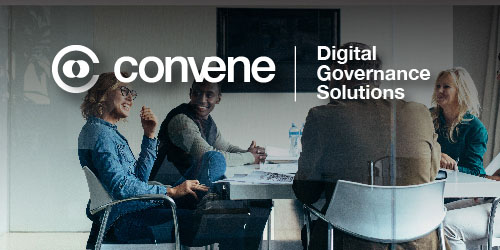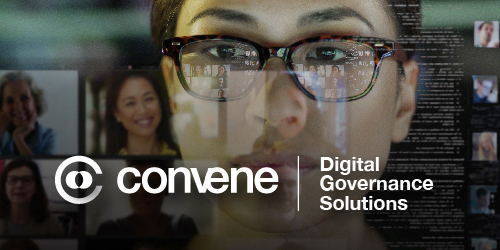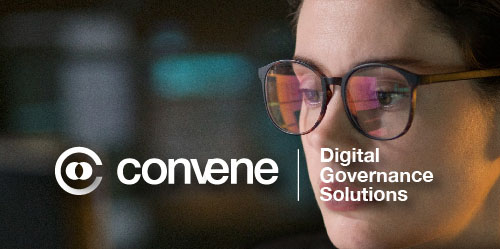Building effective software infrastructure is essential for any company. You need to know what will best suit your existing operations and the level of security required for any special category data.
It can be a tricky task to choose the best options for your Board, so we have put together this helpful guide!
What Every Board Needs to Know about Building Software Infrastructure for Their Organisation:
1) What Is Software Infrastructure?
Software infrastructure is the framework of physical and virtual resources which controls the flow, processing, analysis and storage of data. These physical components are within a data centre hosted on site, externally or in the cloud. The virtual resources are the programmes you select to run on your devices.
2) Who Manages The Software Infrastructure?
Within your organisation a Member of your Board or Senior Leadership Team will oversee the management of your Board software infrastructure. They will either be your Chief Information Officer (CIO), or the most senior representative of your IT Department.
You may choose a third party to run some of your virtual resources, and every provider offers different levels of controls. You may have full ownership of the system, or you may have to host your data in a separate third-party location. It is important to ask these questions when selecting any software and know in advance which option your organisation would prefer. Is hosting in the cloud necessary for your operations, or do you require on-site data hosting for extra security?
3) What Are The Different Types Of Software Infrastructure?
There are 7 different types of software infrastructure to choose from:
- Immutable: This is an application, software, or service in which every time a change occurs, a new product has to be launched. Its components have to be replaced rather than updated.
- Composable: This infrastructure treats physical resources as services and is managed through software tools.
- Dynamic: This type of software can automatically adjust itself as necessary depending on the workload, as well as allowing for management manually.
- Critical: This concept is based on high availability (HA) and uses remote data centres and cloud resources to make sure work is adaptable for all situations. With these frameworks, there is a need for increased security.
- Contact-centre: This is essentially a call-centre model, integrating automatic phone and software infrastructures.
- Cloud: This method uses the Cloud, through a system of remote hardware in the form of data centres, for remote application and storage purposes.
- Dark: This is an undocumented, unknown system and is not recommended for security purposes. This can cause problems for your Board’s software infrastructure, so it is best not to choose this option!
4) How Are Software Infrastructures Created?
Gone are the days of having to build your own data centres and the general heavy-lifting of the manual work that went into creating a software infrastructure. Now, you just have to select providers with relevant expertise and integrate into your existing systems. This is called Converged Infrastructure, bringing together multiple platforms and software programs into one system. If you go a step further, and integrate into one single-vendor, this is called Hyper Converged Infrastructure.
The Best Practices Board Members Can Use to Ensure Long-term Success with IT Projects:
Ensuring the long term success of an IT Project is not that different from any other project.
Firstly, you have to know the best practices for a tech project. Then, you need to know how to build an IT project plan your Board can implement.
The Best Practices In A Tech Project:
- Ascertain the Board's needs and expectations - what gap in your workflow or problem are you trying to fix. There is always room for improvement, but there is no one product that is one size fits all!
- Achieve Balance - there will be a lot to juggle. It is important to prioritise what is most important.
- Set Up A Clear Timeline - sticking to a schedule allows you to make sure that you are using your time and money wisely.
- Budget Beforehand - doing your due diligence also means knowing your upper limits, how much can you afford to lose on a risk, how much money will you save in the long run?
- Trial Before Use - there is no use purchasing a product that will not be used. You need to make sure that it is a good fit before you commit.
The Basics Of An IT Project Plan:
- Define the scope of your plan, i.e., who are the stakeholders? What are your success criteria? Etc. All of this will help you create a Project Charter, Work Breakdown Structure and Statement of Work.
- Assess risks and perform your due diligence.
- Assign your project team roles and responsibilities. These should be clearly defined and necessary to the operation.
- Acquire the project resources. This includes personnel as well as equipment and financing.
- Open communication channels, so you can effectively produce plans, budgets, schedules, and other supporting documents for the project.
How To Get Your CIO On Board With The Idea Of Updates Overhauling IT Systems:
One of the fundamental stages of getting any IT project started is getting the approval of your Chief Information Officer (CIO). Your CIO is essential to the smooth running of your software systems, so any new product needs to be approved by them.
The first step to getting your CIO on board with the idea of updates is to invite them to the Board meetings. Not all CIOs are Board Meeting regulars, but they should be! As the top manager of all systems and communications, they should be included in and lead discussions surrounding any software changes.
This will also allow your CIO to be more in touch with the organisation’s problems, potentially seeing a software solution others may not have. Technology is the future, but it is also the basis of many of our day-to-day working realities.
You should always present your CIO with the risks of any new software, but also champion its benefits. It’s important to have done your due diligence before suggesting any product. They are busy and if you have done your research it allows them to do theirs quickly!
Remember, you should value your CIO’s opinion, but they should also listen to yours. Strategy is all about collaboration after all!
3 Ways To Prepare For The Future Of Technology And Ensure Your Company Isn't Left Behind:
Staying ahead of the curve with technology can ensure your company’s success. Technology can help you save time, resources and energy, so you can focus on decision-making and strategic-planning. Here are our top tips to consider when preparing for the future of technology in your company:
-
Choose software which will ease the workflow:
So many day-to-day tedious tasks can be automated now. From meeting minutes to coordinating calendars, your administrative staff can save hours of time with a few simple clicks on their computers.
In the past, coordinating an effective meeting time would have meant the Board Secretary calling or emailing everyone else’s secretaries to find an appropriate slot in everyone’s schedules. Now, most companies have an Active Directory integrated into their calendars, so they can see before sending an invitation what time is suitable for all participants. Before technology, this was a task that took hours.
-
Invest in solutions that will save you money:
Software may seem like an expense at the moment, but often it can save you precious pennies when it comes to your resource budget. For example, consider how much money you spend on printing paper for physical agendas and records, compared to how much you spend on cloud computing. Typically, the computing option is a better investment of your time in both the short and long term.
-
Always do your due diligence.
When choosing a software option, it is crucial to specify what you need from a product and compare different providers. There is usually more than one company producing similar solutions, but the price and features will differ. You should be sure that you are balancing both the cost and functionality of any technology.
How Can Convene Help Your Board With Effective Software Infrastructure?
Convene is an award-winning Board Portal selected by 100s of companies worldwide to provide effective and efficient meeting solutions. Now fully integrated with Microsoft Teams, our features streamline your processes from start-to-finish, so you can spend your time on what really matters.








